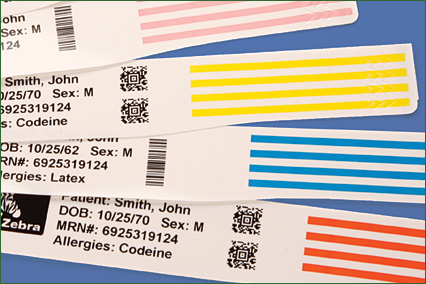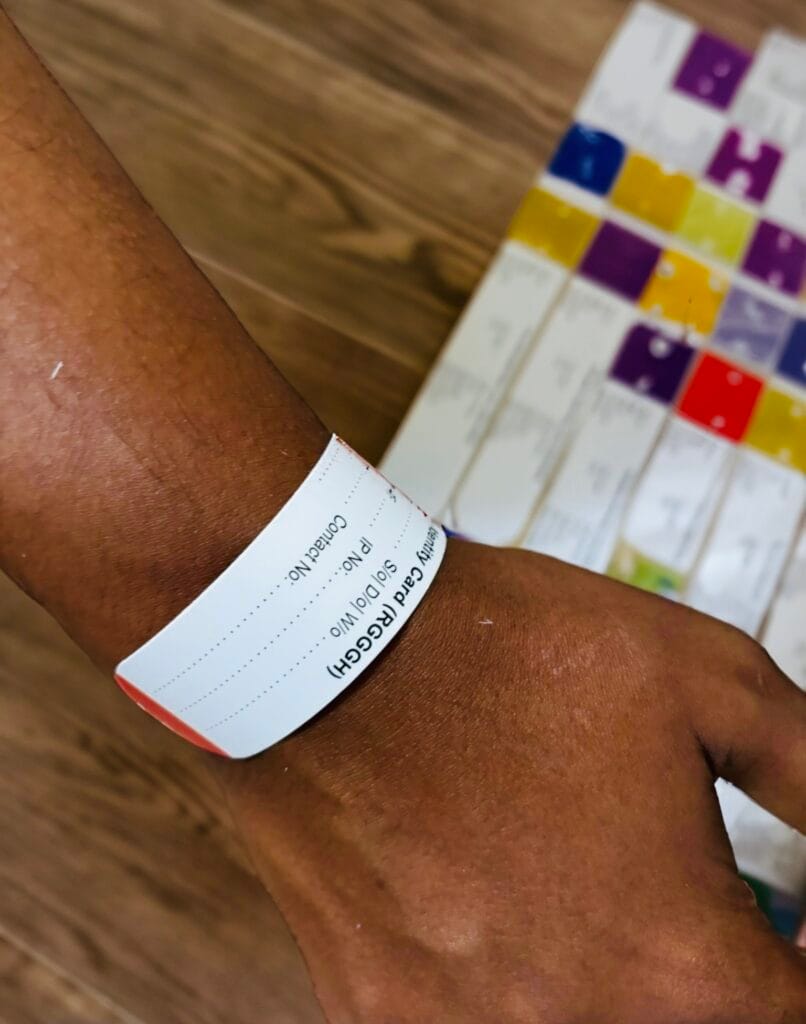Enhancing Security: The Importance of Client Recognition Bands in Health Care
In the realm of health care, the effectiveness of person identification bands can not be overstated, as they serve as an essential safeguard against misidentification and succeeding errors. As we explore the multifaceted duty of these bands, it comes to be obvious that their significance expands past plain identification, elevating inquiries regarding ideal methods and future technologies in client safety.
Overview of Person Recognition Bands
Client identification bands play a vital function in guaranteeing the safety and precision of individual treatment in medical care setups. These bands, commonly used on the wrist or ankle joint, serve as a vital device for verifying patient identification, consequently lessening the danger of mistakes in treatment, medication management, and various other healthcare treatments. Made from sturdy materials, client identification bands often include vital information such as the patient's name, date of birth, medical document number, and barcodes or QR codes for scanning.
The application of individual identification bands is important in different medical care settings, including health centers, outpatient centers, and lasting treatment establishments. They add to a systematic approach in patient administration, enabling health care professionals to swiftly and precisely recognize patients, specifically in high-pressure circumstances where speedy decision-making is necessary.
Additionally, the usage of these bands is lined up with regulative criteria intended at improving patient safety - Patient Identification Band. By ensuring that each patient's details is quickly proven and readily accessible, health care suppliers can preserve a high requirement of treatment, lower the occurrence of unfavorable occasions, and foster a society of safety within healthcare organizations
Benefits of Accurate Identification
Accurate recognition is essential to boosting client security and care high quality in health care settings. It serves as the first line of protection versus mistakes that might bring about unfavorable person results. By ensuring that each patient is correctly identified through trusted ways, such as patient identification bands, medical care providers can dramatically lessen the threat of misidentification, which can bring about unacceptable therapies, medication errors, and even medical mix-ups.
Moreover, exact client identification facilitates reliable interaction among medical care teams. When all employee can continually determine people, they can share essential details more effectively, causing much better sychronisation of care. This is specifically vital in emergency scenarios where timely treatments are vital.
Furthermore, exact recognition sustains conformity with regulatory criteria, therefore decreasing the risk of lawful repercussions for medical care centers. It cultivates depend on between people and doctor, as individuals feel more protected understanding that their identities are being guarded.

Usual Challenges Faced
Making sure effective individual recognition in medical care settings provides a variety of obstacles that can compromise safety and care quality. One substantial obstacle is the variability in individual populaces. People might arrive in a state of complication or distress, making exact identification tough. Additionally, language obstacles can prevent reliable interaction, complicating the confirmation process.
One more difficulty is the dependence on human variables in identification procedures. Medical care professionals might inadvertently misunderstand or ignore identification methods, specifically in high-stress settings such as emergency situation departments. This can bring about mistakes, consisting of the management of incorrect treatments or medicines.
Technical concerns likewise position challenges. Digital health document (EHR) systems are developed to streamline person recognition, system outages or customer errors can interfere with the procedure. In addition, the physical design of individual ID bands can cause readability concerns, especially in situations where bands are harmed or obscured.
Finally, irregular training amongst personnel regarding identification protocols can result in voids in expertise and technique. Attending to these obstacles is important for improving individual safety and guaranteeing that identification see here now bands offer their desired purpose properly.
Ideal Practices for Implementation
To properly execute client identification bands in health care settings, companies must embrace a multifaceted technique that focuses on standardization, training, and technology assimilation. Standardization involves establishing clear procedures for the design, application, and use identification bands throughout all departments. This ensures uniformity and reduces the risk of mistakes linked to variations in band types or classifying methods.


Training is important for all health care staff to ensure they understand the relevance of precise patient identification, how to correctly read and apply identification bands, and the procedures to comply with in instance of disparities. Normal workshops and correspondence course can enhance this understanding and promote a culture of safety and security.
Modern technology combination plays a crucial duty in boosting the effectiveness of person identification bands. Using barcode scanning or RFID innovation can improve the identification procedure, enabling for real-time verification of patient identifications. In addition, electronic health and wellness document systems must be configured you could try this out to consist of signals for mismatches between the identification band and client data.
Future Trends in Patient Safety
As health care remains to advance, the focus on patient security is likely to heighten, driven by innovations in modern technology and a greater understanding of systemic dangers. Arising fads indicate a shift towards even more incorporated systems that take advantage of data analytics, expert system, and equipment learning to enhance person recognition procedures. These modern technologies can assist identify possible safety concerns prior to they rise, thereby lowering mistakes connected with misidentification.
In addition, the implementation of blockchain innovation may revolutionize just how patient data is safely shared among doctor, ensuring that recognition bands are up-to-date and continually exact. This will certainly not only improve individual safety yet also assist in seamless interaction throughout multidisciplinary teams.

Additionally, the expanding emphasis on personalized medication is check my reference anticipated to affect patient safety protocols. By including hereditary and group details into recognition systems, medical care specialists can customize treatments better, lessening the risks of unfavorable reactions due to misidentification.
Conclusion
In verdict, person identification bands serve as a crucial part in boosting safety within healthcare environments. Ultimately, the ongoing emphasis on durable identification protocols will add to better client results and overall safety in healthcare setups.
In the world of health care, the efficacy of patient identification bands can not be overemphasized, as they serve as a fundamental safeguard versus misidentification and subsequent mistakes.Person recognition bands play a crucial duty in making certain the safety and security and accuracy of patient treatment in healthcare settings. Made from durable products, person identification bands frequently include essential info such as the individual's name, date of birth, medical record number, and barcodes or QR codes for scanning.
By making sure that each individual is correctly recognized through reliable ways, such as individual recognition bands, healthcare providers can substantially decrease the risk of misidentification, which can lead to improper therapies, medicine mistakes, and even surgical mix-ups.
In verdict, individual recognition bands offer as a vital component in improving safety within medical care environments. Patient Identification Band.